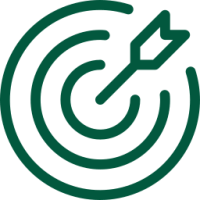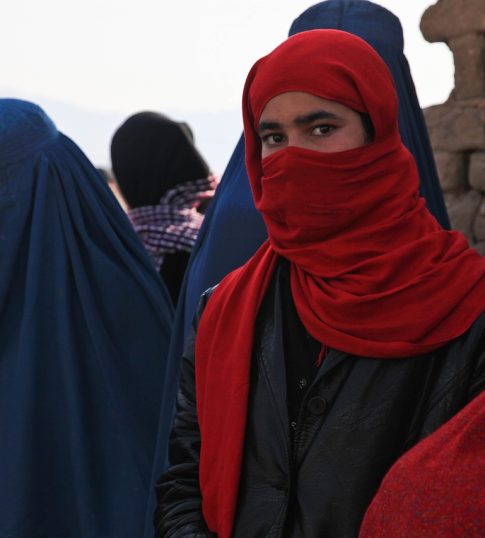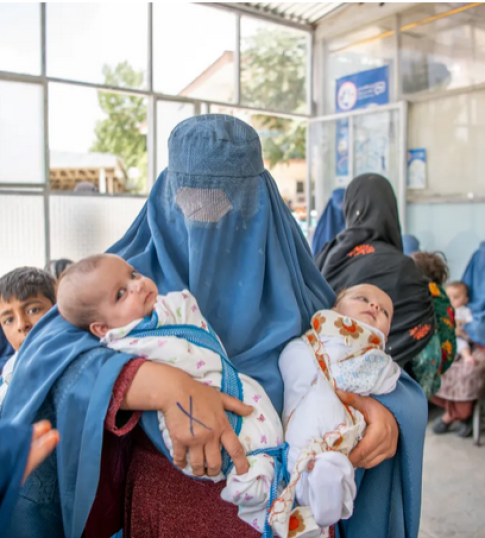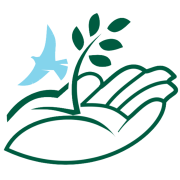


“Doing nothing for others is the undoing of ourselves.”
Horace Mann


OUR MISSION
OAHS is a women-led organization dedicated to providing essential assistance to the most vulnerable and needy populations in Afghanistan. Through integrated rural rehabilitation, inclusive development, and humanitarian programs, we empower women, individuals, and communities to improve their socioeconomic conditions and create sustainable change.
OUR VISION
OAHS envisions a future where every girl and individual in Afghanistan has access to education, healthcare, livelihood opportunities, and a sense of dignity and belonging. We believe in promoting social justice, gender equality, and inclusive development, and we are committed to making a lasting impact on the lives of the people we serve by upholding our values of compassion, integrity, and collaboration.

OBJECTIVES AND GOALS
- Promoting Education and Professional Development for Women and Girls;
In recognition of the challenging situation in Afghanistan, OAHS is committed to promoting education, training, and professional development for women and girls. Through targeted initiatives, OAHS aims to empower women to overcome barriers and participate fully in economic life across all sectors. By doing so, OAHS contributes to building stronger economies, achieving internationally agreed goals for development and sustainability, and improving the quality of life for women, men, families, and communities.
- Improving Health and Reducing Morbidity and Mortality;
OAHS places a strong emphasis on the health and well-being of vulnerable members of society. By providing medical services, training, and health research, OAHS aims to reduce morbidity and mortality rates and promote health education. This includes reaching out to those facing the greatest challenges, ensuring access to essential healthcare and empowering individuals to make informed decisions regarding their well-being.
Read More
- Alleviating Poverty through Emergency, Rehabilitation, and Development Projects;
OAHS recognizes that poverty alleviation is crucial for sustainable development. Through emergency response initiatives, rehabilitation efforts, and long-term development projects, OAHS seeks to address the root causes of poverty and create pathways towards economic stability and self-sufficiency.
- Enhancing Education and Knowledge in Target Communities;
OAHS is dedicated to enhancing education and knowledge among its target populations, with a special focus on women and girls. By improving access to education and promoting literacy initiatives, OAHS empowers individuals to expand their opportunities, gain new skills, and enhance their socioeconomic conditions.
- Increasing Employment Opportunities through Vocational Training and Skills Improvement Programs;
OAHS understands the importance of employment opportunities in achieving sustainable development. By providing vocational training and skills improvement programs, OAHS equips individuals with the necessary tools to secure gainful employment and improve their livelihoods.
- Raising Awareness of Sustainable Development, Democracy, and Human and Women’s Rights;
OAHS actively raises awareness of the challenges and opportunities related to sustainable development, democracy, and human and women’s rights. By promoting dialogue and engaging communities, OAHS strives to foster a culture of inclusion, participation, and respect for fundamental rights.
- Fostering Local and International Partnerships;
OAHS recognizes the importance of collaboration and cooperation in achieving its goals. By fostering partnerships with local residents, authorities, and non-governmental organizations (NGOs), OAHS ensures effective communication, shared objectives, and the successful execution of its activities. Such partnerships also facilitate technical assistance and cooperation, enabling OAHS to maximize its impact and reach.
Whom We Operate For;
OAHS is dedicated to extending assistance to the most marginalized and disadvantaged segments of Afghan society. This includes returning refugees, internally displaced persons, impoverished families, women, the unemployed, the uneducated, and community-based organizations. OAHS acknowledges the significance of the agricultural sector and rural activities, directing special attention to initiatives that promote productive and sustainable livelihoods at the grassroots level. By empowering these vulnerable individuals and communities, OAHS works towards fostering a more inclusive and resilient society.
Program Goals;
Current Objectives:
- Assisting the most vulnerable and needy communities.
- Supporting the resettlement and livelihood coping strategies of refugees and internally displaced persons.
- Rehabilitating basic civil infrastructures.
- Combating the spread of infectious diseases.
- Building the capacity of Afghans to meet their future needs.
Short-Term Program Objectives:
- Promoting food security and creating income and employment opportunities.
- Improving the health conditions of people and controlling the spread of communicable diseases.
- Rehabilitating and restoring basic civic facilities.
- Containing environmental degradation and promoting environmental protection and conservation.
- Facilitating the repatriation and resettlement of internally displaced people and refugees.
- Ensuring the availability of adequate basic social services at the community level.
Medium and Long-Term Program Objectives:
- Promoting community empowerment and establishing self-help development organizations at the grassroots level.
- Increasing food security and production through access to agriculture development facilities.
- Provision of basic social services at the community level.
- Proper utilization of natural resources and prevention of environmental degradation.
- Generating job opportunities and increasing family income.
- Ensuring organizational sustainability through entrepreneurial activities.
- Ensuring the availability of trained human resources at the organization and community levels.
- Empowering communities through the establishment of community-based organizations.
By aligning its objectives and program goals with the needs of the communities it serves, OAHS is dedicated to making a tangible and sustainable impact on the lives of the people of Afghanistan.

THEMATIC AREAS:
Health:
The OAHS prioritizes health by establishing healthcare clinics and centers in all regions of Afghanistan, including hard-to-reach areas where access to healthcare is limited. The restrictive gender norms and the protracted crisis have had a significant impact on women and girls’ ability to access life-saving reproductive, maternal, newborn, and child health services. Afghanistan has one of the highest maternal mortality rates in the world, with 638 deaths per 100,000 births in 2017. Similarly, the infant mortality rate is 45 per 1,000 births, and the under-five mortality rate is 58 per 1,000 live births as of 2020. Unfortunately, only 37 percent of Afghan mothers receive postnatal care within two days of giving birth. The prevalence of child and early marriage, coupled with low contraception usage, has resulted in a high number of early teenage pregnancies. The adolescent birth rate is 62 per 1,000 girls aged 15-19, and 20 percent of women surveyed aged 20-42 gave birth before the age of 18.
Read More
Complications during pregnancy and childbirth, along with unsafe abortions, contribute to the leading cause of death among girls aged 15-19 and 20-24, accounting for 64 percent and 69.9 percent of deaths in those age groups, respectively. The predicted increase in child marriage during the current crisis period further jeopardizes the health and survival of teenage girls and their newborns. Mental health outcomes in Afghanistan are also low due to various factors such as exposure to conflict, social trauma, displacement, economic stressors, and a lack of adequate support services. A study by the World Health Organization estimated that over two million Afghans suffer from mental health problems, including stress conditions, primarily resulting from the extended conflict. Moreover, refugees and those living in conflict-affected areas face even higher mental health stressors. Shockingly, approximately 77 percent of children needing mental health services are unable to access them, and the numbers are even more dire for adult and child undocumented refugees, with only six percent and three percent, respectively, able to access mental health services. The closure of schools due to the crisis has also had an impact on the mental health of adolescent girls. However, mental health services are limited in Afghanistan, and cultural biases also create barriers to accessing mental health and psychosocial support (MHPSS) for the population.
Protection:
The OAHS’s protection efforts focus on addressing gender-based violence (GBV) and ensuring child protection. GBV remains widespread in Afghanistan, and although there is limited data on prevalence, a health survey conducted by the World Bank in 2015 found that 56 percent of married women reported experiencing violence. Instances of intimate partner violence, child and early forced marriage, killings, sexual abuse, and trafficking of young boys are frequent but often underreported. Women and girls with disabilities are disproportionately affected by GBV, experiencing domestic violence at twice the rate of other women and facing unique forms of violence. The ongoing crisis has had severe consequences for girls and boys. Surveys have documented an increase in child marriages due to economic crises and humanitarian needs, with six percent of households reporting marriages of girls at an earlier age than expected. Child labor has also seen a dramatic upsurge in 2021, corresponding to increased poverty levels and economic insecurity.
FSAC:
The OAHS aims to strengthen the coordination of emergency food security response planning, implementation, and monitoring by enhancing the role of the Food Security and Agriculture Cluster (FSAC). Food security in Afghanistan is deeply gendered, with Afghan women disproportionately affected by food insecurity and more likely to skip meals. Women-headed households are particularly struggling, with nearly 100 percent of them facing insufficient food consumption, and 82 percent resorting to extreme measures to cope with food shortage, compared to 70 percent of male-headed households.
Women Empowerment:
Women’s empowerment plays a critical role in achieving sustainable development and social progress. By empowering women, their potential is unlocked, their rights are enhanced, and they can actively participate in decision-making processes at all levels. The benefits of women’s empowerment include economic development, gender equality, improved health and well-being, increased social participation, and enhanced peace and security in communities. Strategies for women’s empowerment include enhancing access to quality education, providing vocational training and skill development programs, creating economic opportunities through entrepreneurship training and access to credit, advocating for gender-responsive laws and policies, implementing comprehensive programs to prevent and respond to gender-based violence, promoting social and cultural change by challenging harmful gender norms and stereotypes and engaging communities and religious leaders in promoting women’s rights and empowerment.
Livelihood:
In Afghanistan, poverty rates were already high, with an estimated 47.3 percent of the population living in poverty in 2020. Since the new regime takeover, the situation has significantly deteriorated. Women, in particular, are disproportionately affected by the current economic crisis due to their low participation in the labor market. This economic insecurity hampers their ability to navigate and recover from shocks. Barriers such as low literacy rates, low levels of education completion, disapproval within the community of women working outside the home, and restrictions imposed by the DFA further hinder women’s participation in the formal labor market.
Education:
Access to education in Afghanistan, especially for girls, has been significantly impacted. In 2021, approximately four million children were out of school, with girls accounting for 60 percent of that number. While attendance rates for both girls and boys have decreased at all school levels and types due to the COVID-19 pandemic, girls’ attendance has declined at a rate three times higher than that of boys at both secondary and university levels since the DFA takeover
We Can Help
If You're In Trouble
OAHS focuses on several key fields, including Health, Education, Agriculture, Irrigation, and Social Services. The organization is committed to working in all parts of Afghanistan but places special emphasis on areas that have been severely affected by conflict and where projects have not yet been implemented. OAHS employs specialized personnel in the social services, health, education, and agriculture sectors to ensure the effective implementation of its projects and programs.
Donate Us
Account Holder:
Omaid Afghanistan Humanitarian Services
USD Account No: 0063112044612401
Account with: Afghanistan International Bank (AIB)
SWIFT Code: AFIBAFKAXXX

